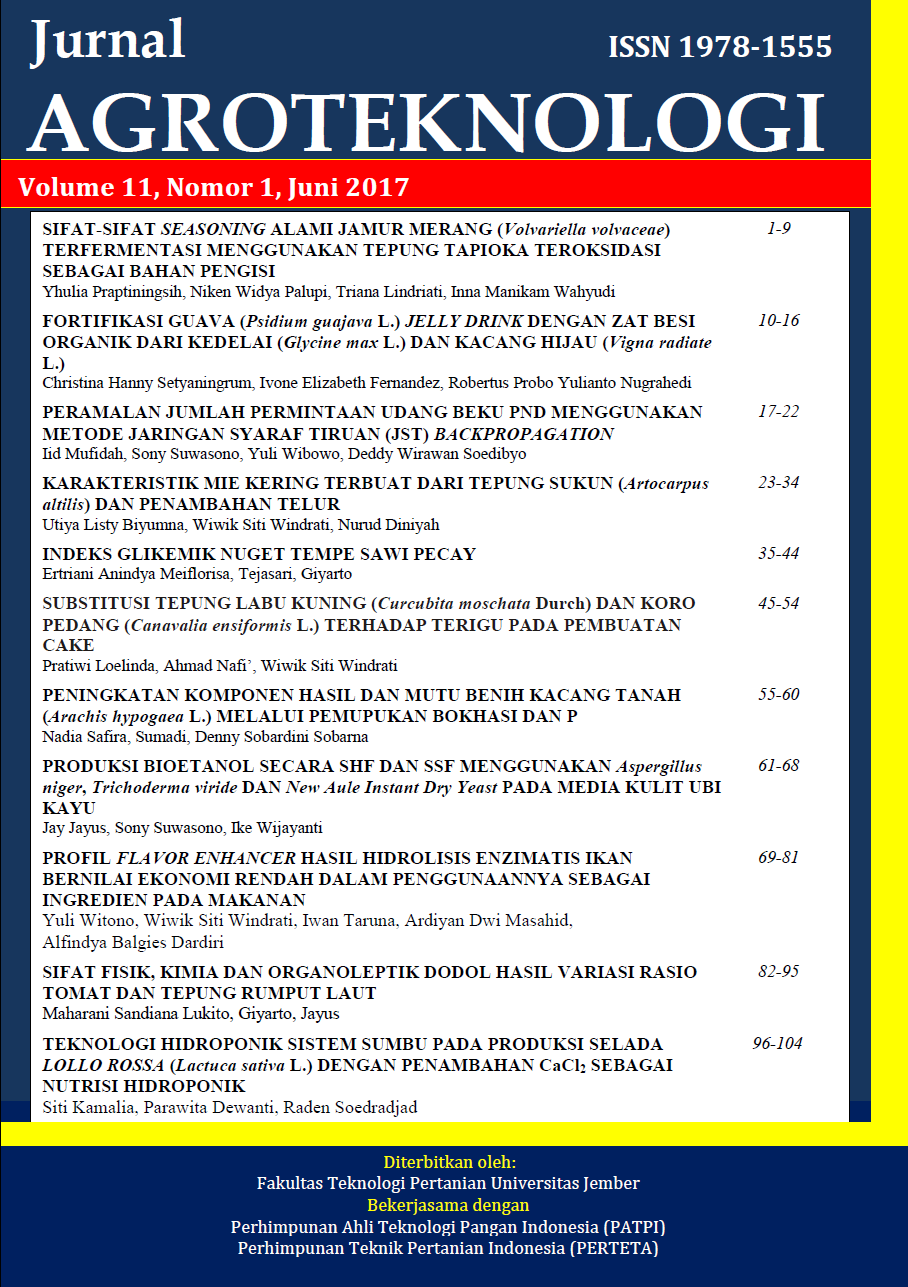TEKNOLOGI HIDROPONIK SISTEM SUMBU PADA PRODUKSI SELADA LOLLO ROSSA (Lactuca sativa L.) DENGAN PENAMBAHAN CaCl2 SEBAGAI NUTRISI HIDROPONIK
DOI:
https://doi.org/10.19184/j-agt.v11i1.5451Abstract
Calcium in one of the important minerals that are needed by human body as much as 1200 mg calciums/ day/ person. Every day humans consume calcium as much as 254 mg/ day/ person and it causes people suffering ostheoporosis and other growth disorders. Therefore human needs to consume the source of calcium, one of them is vegetables. Vegetables in one of the source of calcium that is cheap, obtainable and consumable. Lettuce (Lactuca sativa L.) is one of the vegetable with high caclsium but development of lettuce cultivation is still limited.. The efford to increase the quantity and quality of lettuce production can be done with hydroponics technology. Hydroponics technology enables efficient lettuce cultivation. The innovation adding of CaCl2 concentration in hydroponic nutrients is expected to increase the lettuce production. The purpose of this research was to determine the concentration of CaCl2 on the hydroponic nutrients of wick system on the production of Lollo Rossa lettuce (Lactuca sativa L.). The research was conducted at the Green House, Faculty of Agriculture, University of Jember, started in August to Noverber 2016. The research used Completely Randomized Design (CRD) with single factor, which was concentration of CaCl2 on the hydroponic nutrients (C) and it be combined with Lollo Rossa varieties of lettuce (Lactuca sativa L.) (S) with three replications. The best concentration of CaCl2 for Lollo Rossa production was 650 ppm.
Keywords: Lettuce, hydroponic, calcium, CaCl2
Downloads
Downloads
Published
Issue
Section
License
Jurnal Agroteknologi has CC-BY-SA or an equivalent license as the optimal license for the publication, distribution, use, and reuse of scholarly work. Authors who publish with this journal retain copyright and grant the journal the right of first publication with the work simultaneously licensed under a Creative Commons Attribution-ShareAlike 4.0 International License that allows others to share the work with an acknowledgment of the work's authorship and initial publication in this journal.
 JURNAL AGROTEKNOLOGI
JURNAL AGROTEKNOLOGI 








.png)
